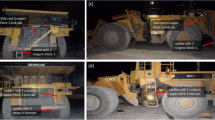Abstract
Two experiments were conducted to assess the effectiveness of photoluminescent material (PLM) in support of occupant evacuation in office buildings. The first study completed in 1999 was designed to assess the potential use of PLM as a safety communication system to support office occupant evacuation. The study measured the occupant premovement time, movement time and evacuation speed in four stairways with different lighting and PLM installations. The positive outcome of the first study regarding a comparable speed of movement in the different stairways used and the conclusive feedback from the evacuees regarding the PLM wayguidance system led to a second study. The second study, completed in 2008, compared 3 stairway installations of PLM markings and a stairway with emergency lighting, which acted as a reference stairway. Results show comparable speed of movement under severe crowd conditions for the 4 stairways studied. Overall, two-thirds of the respondents felt comfortable going down the stairways with PLM markings particularly in the 2 stairways where the marking was installed across each step. The stairway, which had only emergency lighting, and the stairway with L-shaped markers at the edge of each step were less appreciated by the occupants. Occupants commented that the landings and mid-landings were difficult to identify in all the stairways, which suggest that additional marking should be provided in these areas. The findings of these two studies led to the development of a best practice Guide for installation of PLM marking in exit stairways.










Similar content being viewed by others
References
Isner MS, Klem TJ (1993) World Trade Center explosion and fire New York, New York, February 26, 1993. Investigation report. National Fire Protection Association, Quincy, MA, 59 pp
Fahy RF, Proulx G (1995) Collective common sense: a study of Human behavior during the World Trade Center evacuation. NFPA J 9(2):59–67
Averill JD, Mileti DS, Peacock RD, Kuligowski ED, Groner N, Proulx G, Reneke PA, Nelson EH (2005) Federal building and fire safety investigation of the World Trade Center disaster: occupant behavior, egress, and emergency communications, 174 pp. http://wtc.nist.gov/oct05NCSTAR1-7index.htm
New York City Building Code, RS 6-1 and RS 6-1 A (2005) Photoluminescent exit path markings. Local law 26. New York City, USA. http://www.nyc.gov/html/dob/downloads/pdf/rs_6-1.pdf
Proulx G, Tiller DK, Kyle B, Creak J (1999) Assessment of photoluminescent material during office occupant evacuation. Internal report 774. Institute for Research in Construction, National Research Council Canada, Ottawa, 38 pp. http://irc.nrc-cnrc.gc.ca/pubs/ir/ir774/
PSPA (1997) Standard 002 emergency way-finding guidance systems, part 1 code of practice for the installation of emergency way-finding guidance (LLL) systems produced from photoluminescence for use in public, industrial and commercial buildings. Photoluminescent Safety Products Association, UK
Pauls J (1995) Movement of people. SFPE handbook of fire protection engineering, 2nd edn, Chap 3–13. SFPE USA, pp 263–285
Bryan JL (1995) Behavioral response to fire and smoke, SFPE handbook of fire protection engineering, 2nd edn, Chapr 3–12. SFPE USA, pp 241–262
Fruin JJ (1971) Pedestrian planning and design. Metropolitan Association of Urban Designers and Environmental Planners, New York
Proulx G, Pineau J (1996) Differences in the evacuation behaviour of office and apartment building occupants. In: Proceedings of the human factors and ergonomics society 40th annual meeting, vol 2, HFES, Santa Monica, CA, pp 825–829
Tonikian R, Proulx G, Bénichou N, Reid I (2006) Literature review on photoluminescent material used as a safety wayguidance system. Research Report 214. Institute for Research in Construction, National Research Council Canada, 31 pp
ISO 16069 (2004) Graphical symbols—safety signs—safety way guidance systems (SWGS)
ASTM E 2030–04 (2004) Guide for recommended uses of photoluminescent (phosphorescent) safety markings
Peckham G (2005) Photoluminescent directional egress path marking systems. Archi-Tech Magazine, Dec. 2005. Photos used with permission © Jalite USA
Proulx G, Bénichou N, Hum JK, Restivo KN (2006) Evaluation of the effectiveness of different photoluminescent stairway installations for the evacuation of office building occupants. Research report 232. Institute for Research in Construction, National Research Council Canada, 72 pp. http://irc.nrc-cnrc.gc.ca/pubs/rr/rr232/
Proulx G, Bénichou N, Kyle BR, Foo S (2008) Guide for the installation of photoluminescent exit stairway markings in buildings. 22 pp, August 01. http://irc.nrc-cnrc.gc.ca/pubs/fulltext/nrcc50818/
Acknowledgments
These studies were joint research projects between the National Research Council Canada (NRC) and Public Works and Government Services Canada (PWGSC). The authors would like to thank all the participants in the studies including the occupants, Brian Kyle and his team, the building management, PLM manufacturers, and NRC-IRC staff who contributed to this work.
Author information
Authors and Affiliations
Corresponding author
Rights and permissions
About this article
Cite this article
Proulx, G., Bénichou, N. Photoluminescent Stairway Installation for Evacuation in Office Buildings. Fire Technol 46, 471–495 (2010). https://doi.org/10.1007/s10694-009-0102-z
Received:
Accepted:
Published:
Issue Date:
DOI: https://doi.org/10.1007/s10694-009-0102-z




